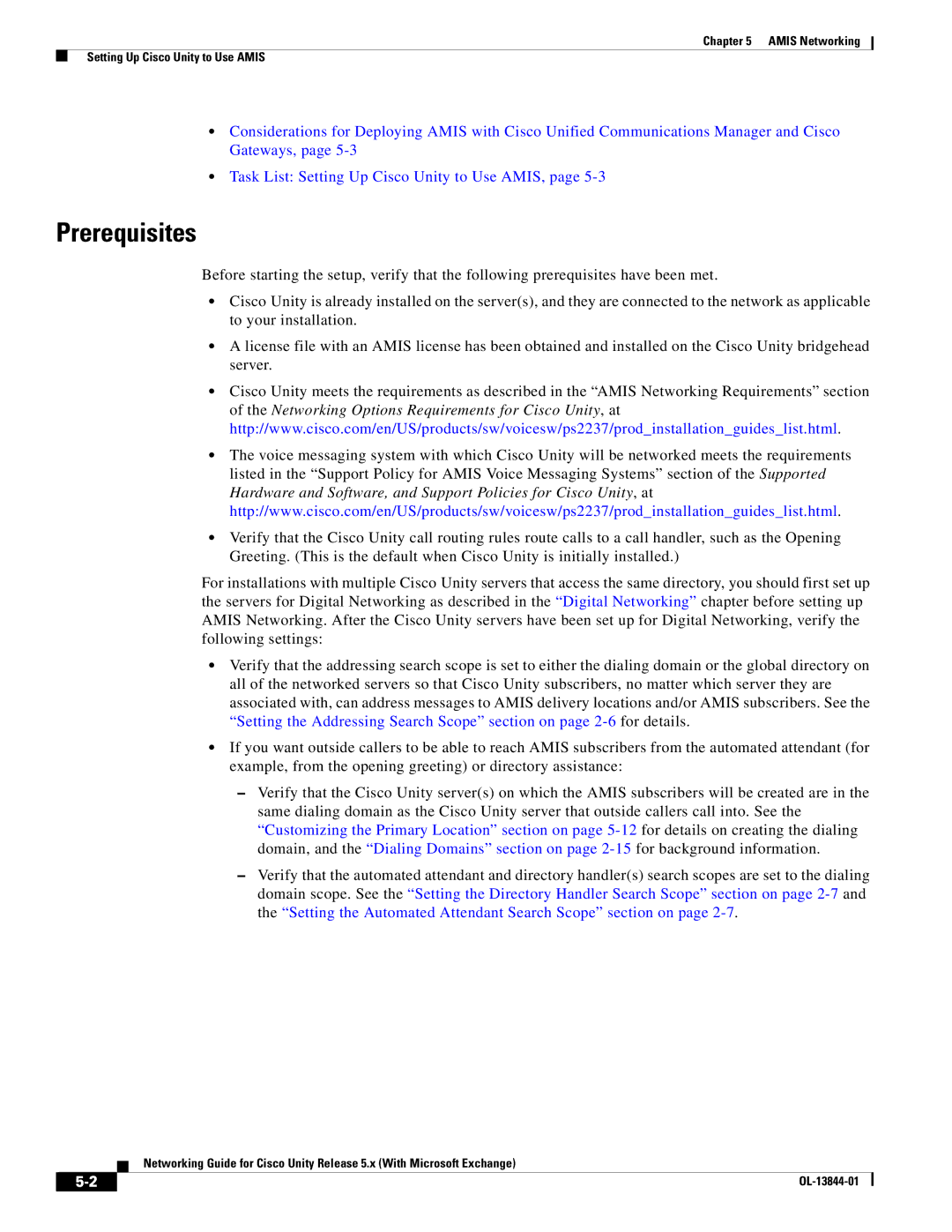
Chapter 5 AMIS Networking
Setting Up Cisco Unity to Use AMIS
•Considerations for Deploying AMIS with Cisco Unified Communications Manager and Cisco Gateways, page
•Task List: Setting Up Cisco Unity to Use AMIS, page
Prerequisites
Before starting the setup, verify that the following prerequisites have been met.
•Cisco Unity is already installed on the server(s), and they are connected to the network as applicable to your installation.
•A license file with an AMIS license has been obtained and installed on the Cisco Unity bridgehead server.
•Cisco Unity meets the requirements as described in the “AMIS Networking Requirements” section of the Networking Options Requirements for Cisco Unity, at http://www.cisco.com/en/US/products/sw/voicesw/ps2237/prod_installation_guides_list.html.
•The voice messaging system with which Cisco Unity will be networked meets the requirements listed in the “Support Policy for AMIS Voice Messaging Systems” section of the Supported Hardware and Software, and Support Policies for Cisco Unity, at http://www.cisco.com/en/US/products/sw/voicesw/ps2237/prod_installation_guides_list.html.
•Verify that the Cisco Unity call routing rules route calls to a call handler, such as the Opening Greeting. (This is the default when Cisco Unity is initially installed.)
For installations with multiple Cisco Unity servers that access the same directory, you should first set up the servers for Digital Networking as described in the “Digital Networking” chapter before setting up AMIS Networking. After the Cisco Unity servers have been set up for Digital Networking, verify the following settings:
•Verify that the addressing search scope is set to either the dialing domain or the global directory on all of the networked servers so that Cisco Unity subscribers, no matter which server they are associated with, can address messages to AMIS delivery locations and/or AMIS subscribers. See the “Setting the Addressing Search Scope” section on page
•If you want outside callers to be able to reach AMIS subscribers from the automated attendant (for example, from the opening greeting) or directory assistance:
–Verify that the Cisco Unity server(s) on which the AMIS subscribers will be created are in the same dialing domain as the Cisco Unity server that outside callers call into. See the “Customizing the Primary Location” section on page
–Verify that the automated attendant and directory handler(s) search scopes are set to the dialing domain scope. See the “Setting the Directory Handler Search Scope” section on page
Networking Guide for Cisco Unity Release 5.x (With Microsoft Exchange)
| ||
|
